Abstract
1. Conflicting data both on the transmission of the human crystalline lens in the ultra-violet part of the spectrum and on its variation with age necessitate a re-examination of the subject. 2. Twenty-four excised lenses in the age range of 0-85 years were studied with a Perkin-Elmer spectrophotometer between 327 and 700 nm. 3. Some lenses were homogenized and the homogenates were similarly examined. 4. A systematic increase in absorbance with age was observed both in the visible and the ultra-violet parts of the spectrum. 5. An exponential function describes the data, facilitating comparison with, and prediction of, other values. 6. The absorbance of homogenized material was found to be predictable from that of intact lenses, and does not support the notion that mechanical trauma may account for high values in earlier studies.
Full text
PDF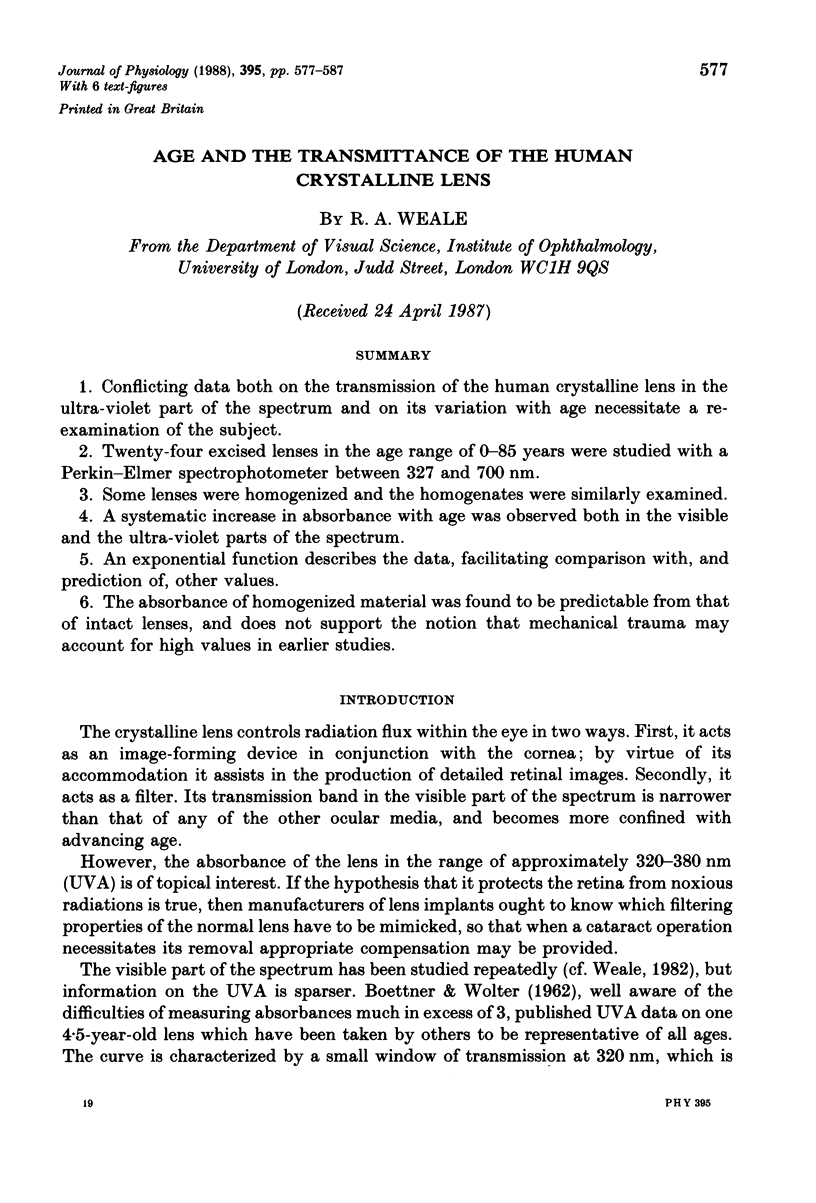
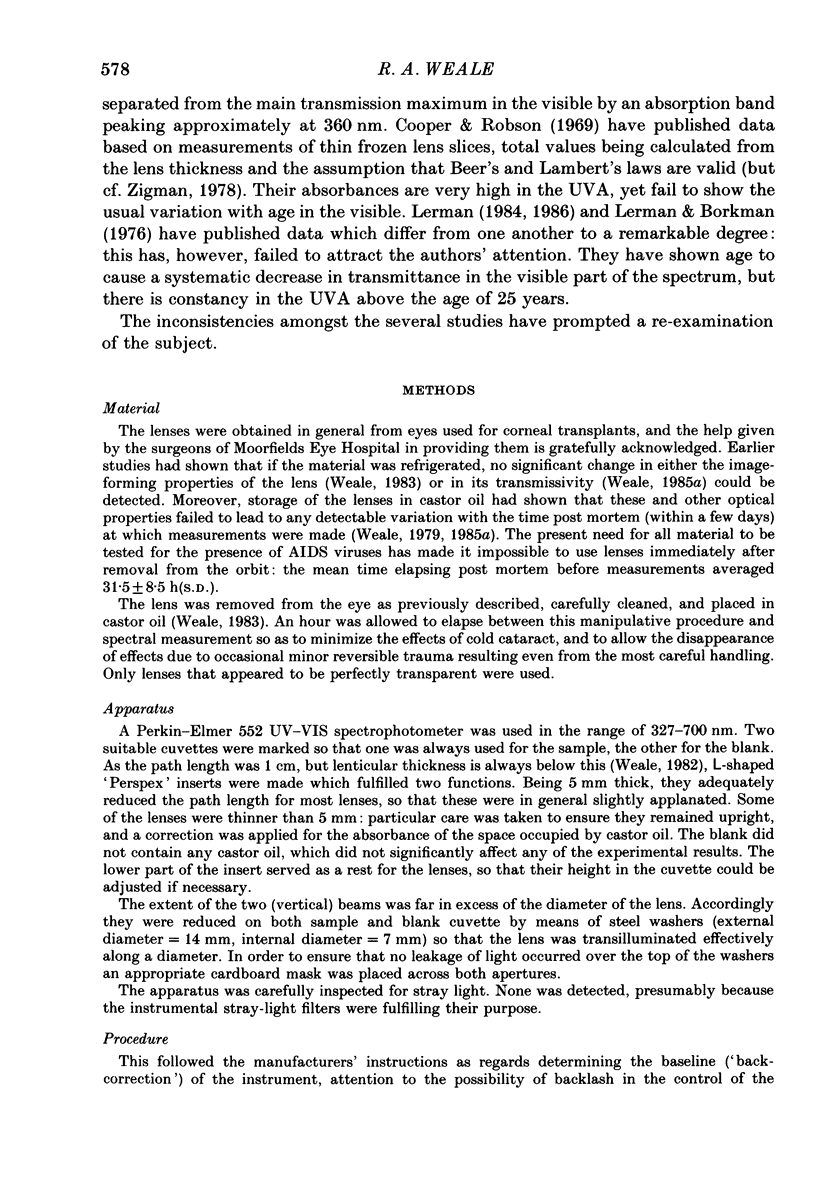
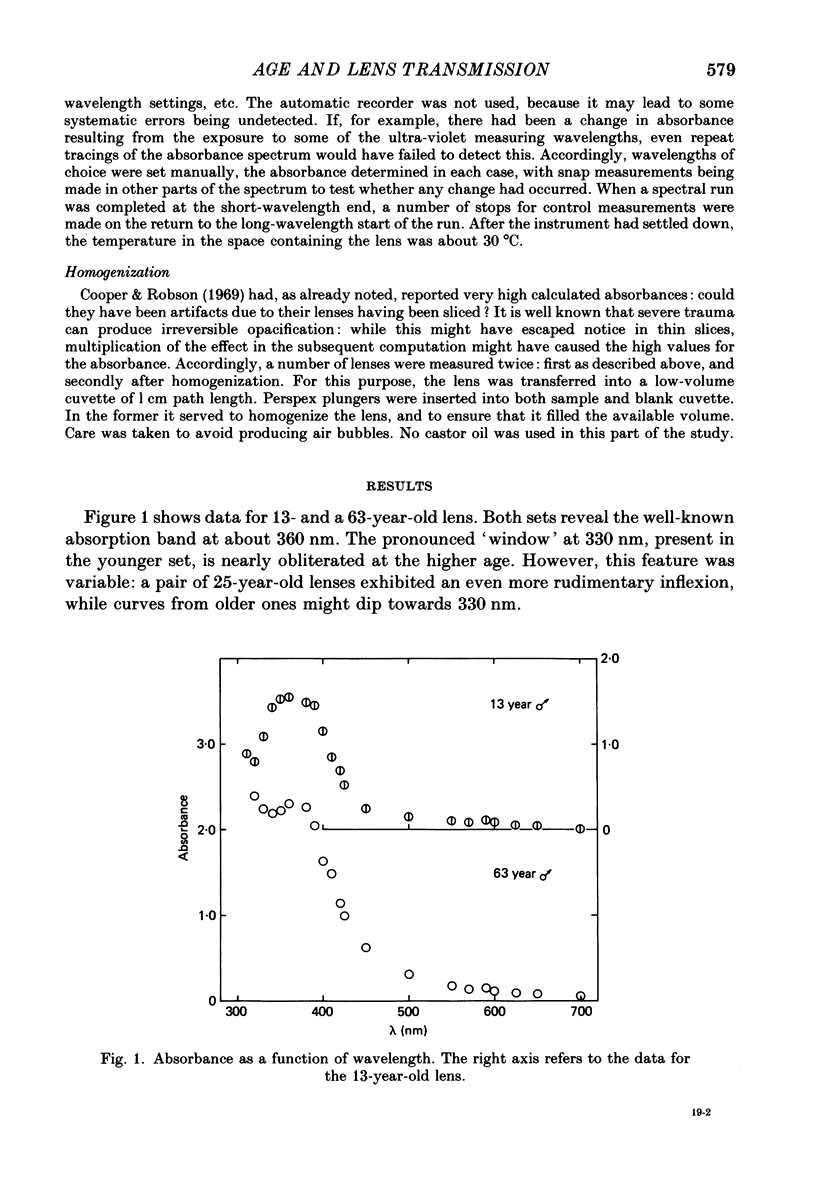
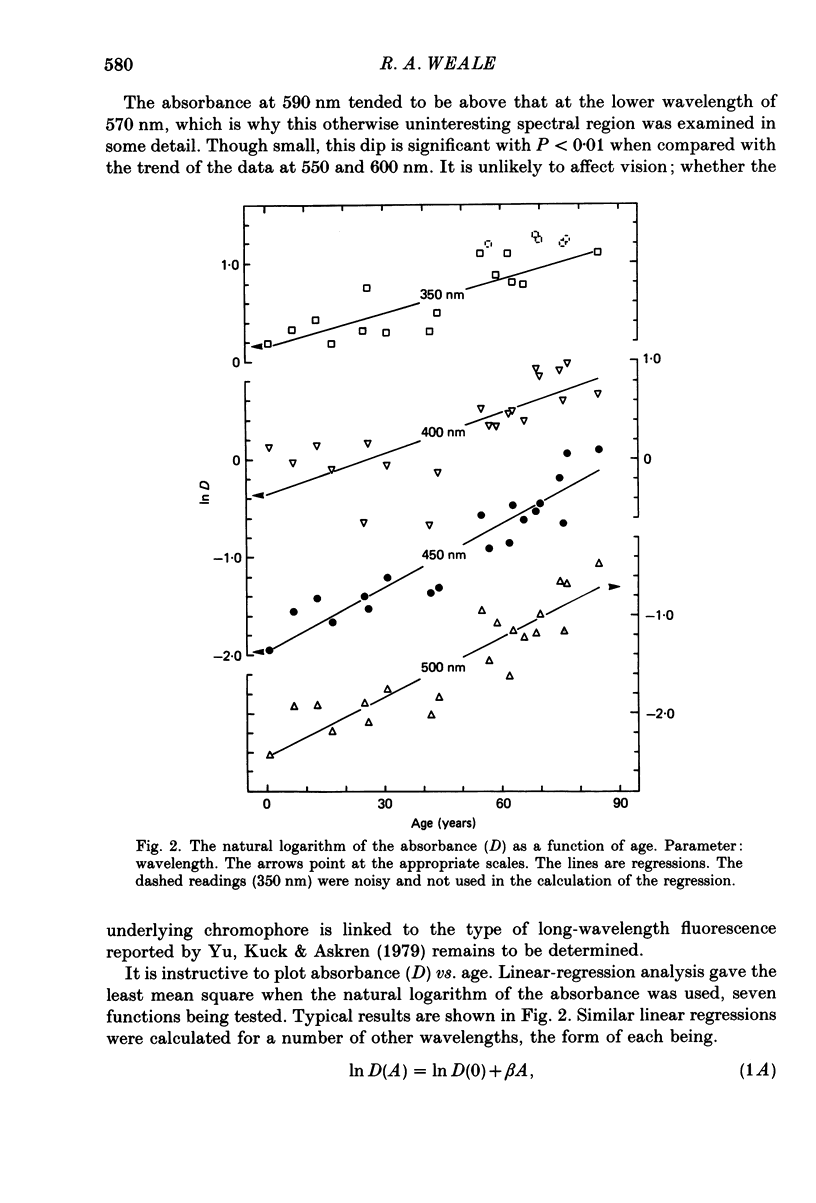
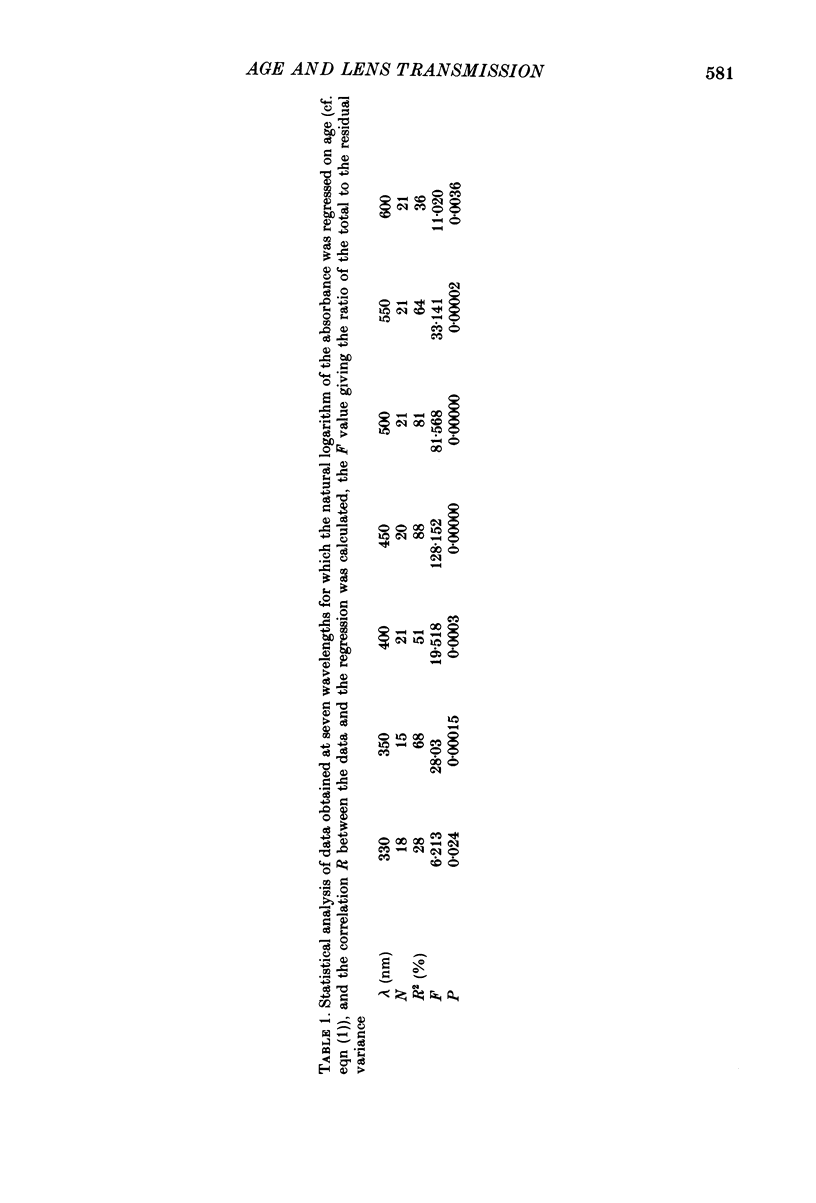
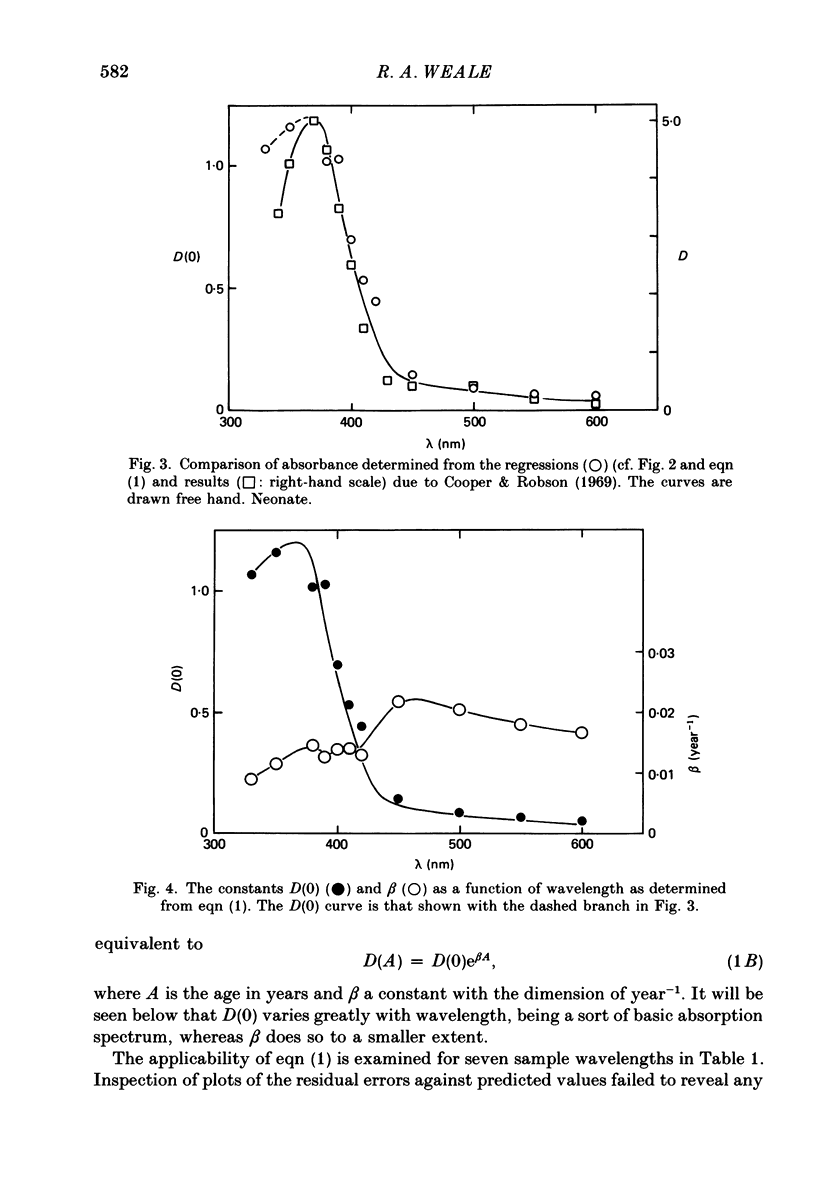
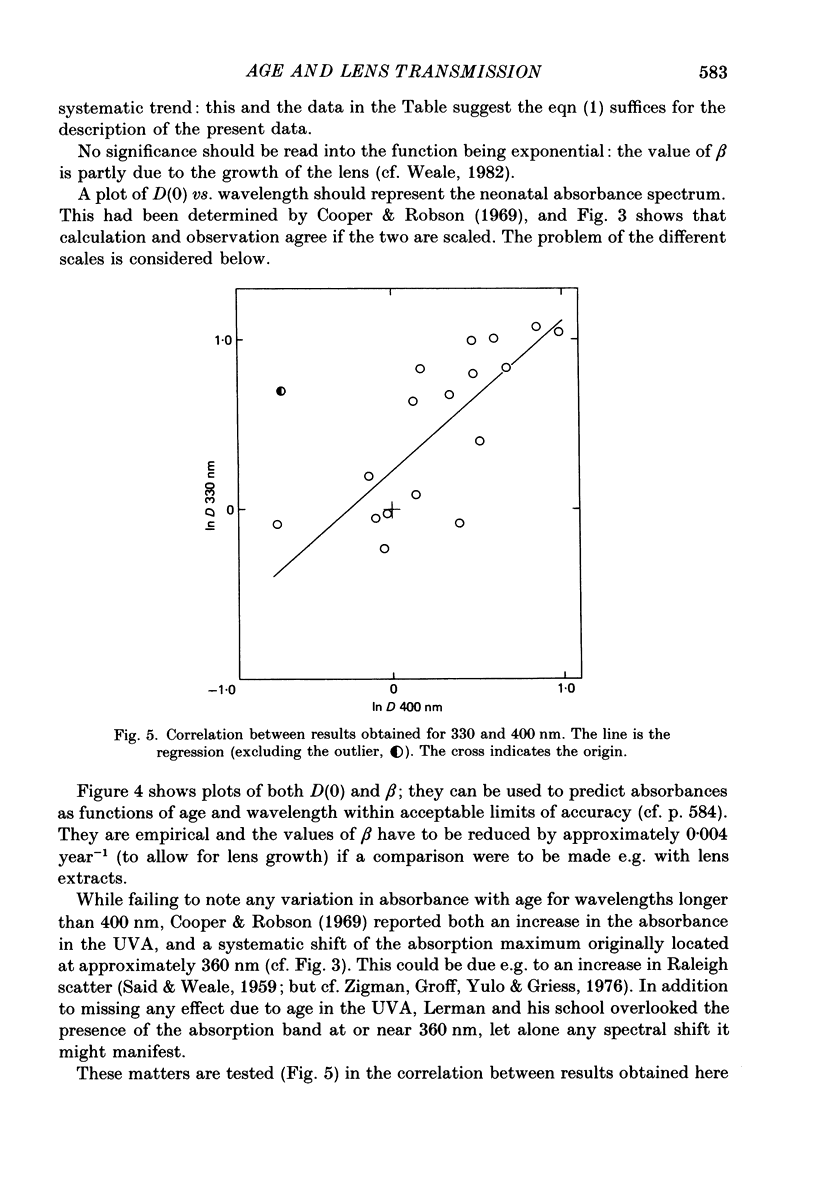
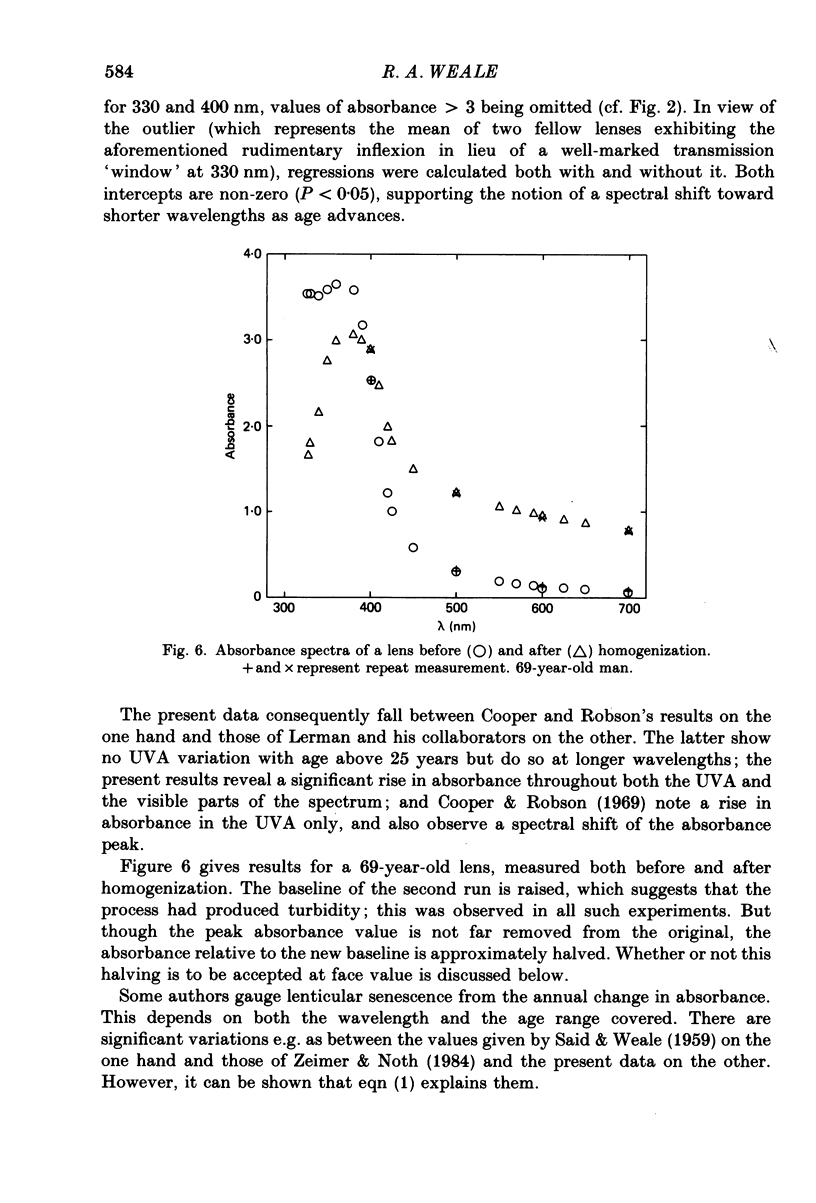
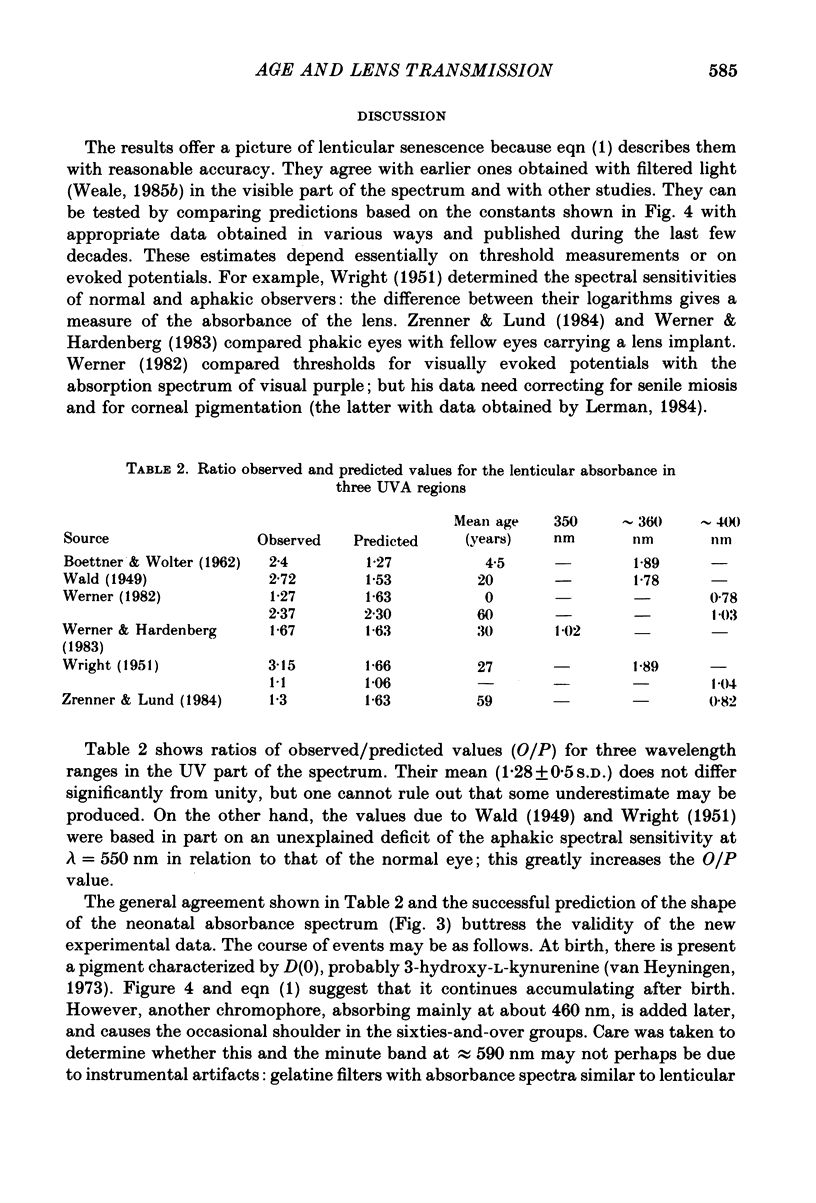
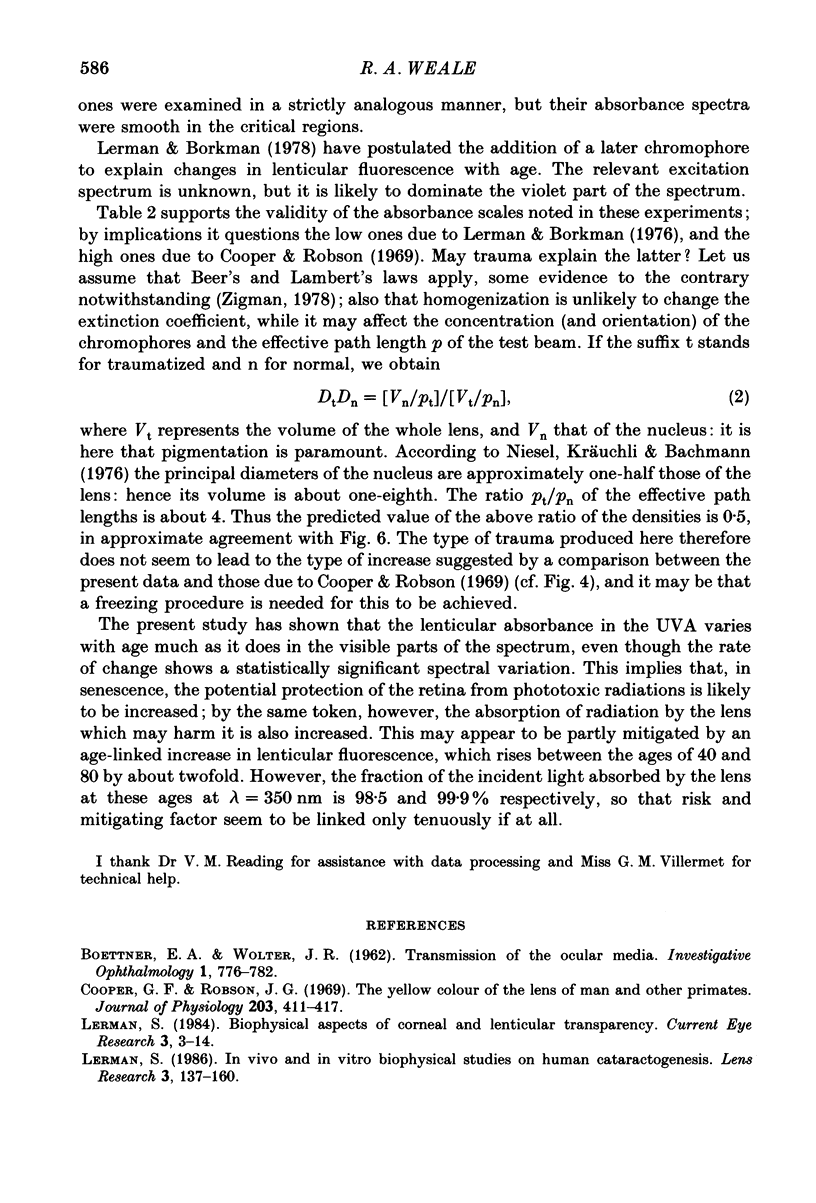
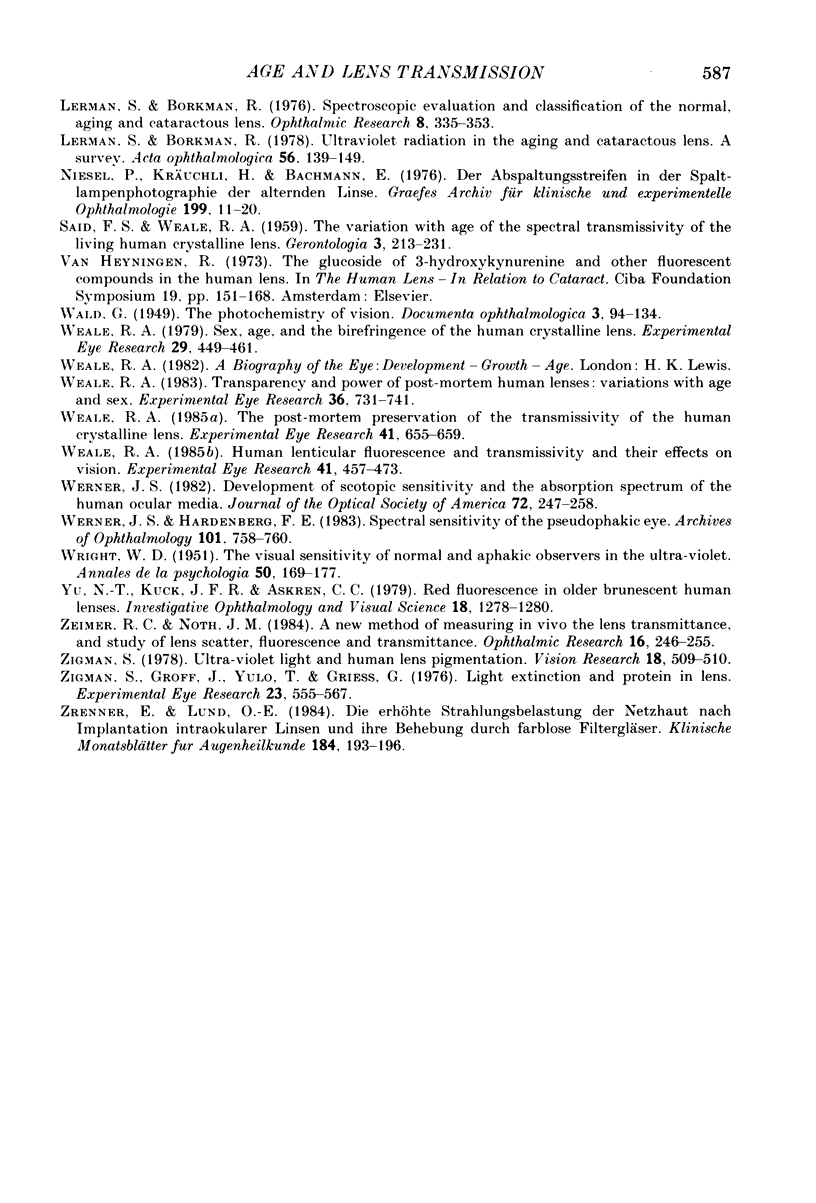
Selected References
These references are in PubMed. This may not be the complete list of references from this article.
- Cooper G. F., Robson J. G. The yellow colour of the lens of man and other primates. J Physiol. 1969 Aug;203(2):411–417. doi: 10.1113/jphysiol.1969.sp008871. [DOI] [PMC free article] [PubMed] [Google Scholar]
- Lerman S. Biophysical aspects of corneal and lenticular transparency. Curr Eye Res. 1984 Jan;3(1):3–14. doi: 10.3109/02713688408997182. [DOI] [PubMed] [Google Scholar]
- Lerman S., Borkman R. Ultraviolet radiation in the aging and cataractous lens. A survey. Acta Ophthalmol (Copenh) 1978 Feb;56(1):139–149. doi: 10.1111/j.1755-3768.1978.tb00476.x. [DOI] [PubMed] [Google Scholar]
- Niesel P., Kräuchi H., Bachmann E. Der Abspaltungsstreifen in der Spaltlampenphotographie der alternden Linse. Albrecht Von Graefes Arch Klin Exp Ophthalmol. 1976 Apr 1;199(1):11–20. doi: 10.1007/BF00660811. [DOI] [PubMed] [Google Scholar]
- SAID F. S., WEALE R. A. The variation with age of the spectral transmissivity of the living human crystalline lens. Gerontologia. 1959;3:213–231. doi: 10.1159/000210900. [DOI] [PubMed] [Google Scholar]
- Weale R. A. Human lenticular fluorescence and transmissivity, and their effects on vision. Exp Eye Res. 1985 Oct;41(4):457–473. doi: 10.1016/s0014-4835(85)80004-x. [DOI] [PubMed] [Google Scholar]
- Weale R. A. Sex, age and the birefringence of the human crystalline lens. Exp Eye Res. 1979 Oct;29(4):449–461. doi: 10.1016/0014-4835(79)90062-9. [DOI] [PubMed] [Google Scholar]
- Weale R. A. The post-mortem preservation of the transmissivity of the human crystalline lens. Exp Eye Res. 1985 Nov;41(5):655–659. doi: 10.1016/0014-4835(85)90037-5. [DOI] [PubMed] [Google Scholar]
- Weale R. A. Transparency and power of post-mortem human lenses: variation with age and sex. Exp Eye Res. 1983 May;36(5):731–741. doi: 10.1016/0014-4835(83)90110-0. [DOI] [PubMed] [Google Scholar]
- Werner J. S. Development of scotopic sensitivity and the absorption spectrum of the human ocular media. J Opt Soc Am. 1982 Feb;72(2):247–258. doi: 10.1364/josa.72.000247. [DOI] [PubMed] [Google Scholar]
- Werner J. S., Hardenbergh F. E. Spectral sensitivity of the pseudophakic eye. Arch Ophthalmol. 1983 May;101(5):758–760. doi: 10.1001/archopht.1983.01040010758011. [DOI] [PubMed] [Google Scholar]
- Yu N. T., Kuck J. F., Jr, Askren C. C. Red fluorescence in older and brunescent human lenses. Invest Ophthalmol Vis Sci. 1979 Dec;18(12):1278–1280. [PubMed] [Google Scholar]
- Zeimer R. C., Noth J. M. A new method of measuring in vivo the lens transmittance, and study of lens scatter, fluorescence and transmittance. Ophthalmic Res. 1984;16(5):246–255. doi: 10.1159/000265325. [DOI] [PubMed] [Google Scholar]
- Zigman S., Groff J., Yulo T., Griess G. Light extinction and protein in lens. Exp Eye Res. 1976 Nov;23(5):555–567. doi: 10.1016/0014-4835(76)90163-9. [DOI] [PubMed] [Google Scholar]
- Zigman S. Ultraviolet light and human lens pigmentation. Vision Res. 1978;18(4):509–510. doi: 10.1016/0042-6989(78)90066-4. [DOI] [PubMed] [Google Scholar]
- Zrenner E., Lund O. E. Die erhöhte Strahlungsbelastung der Netzhaut nach Implantation intraokularer Linsen und ihre Behebung durch farblose Filtergläser. Klin Monbl Augenheilkd. 1984 Mar;184(3):193–196. doi: 10.1055/s-2008-1054439. [DOI] [PubMed] [Google Scholar]


